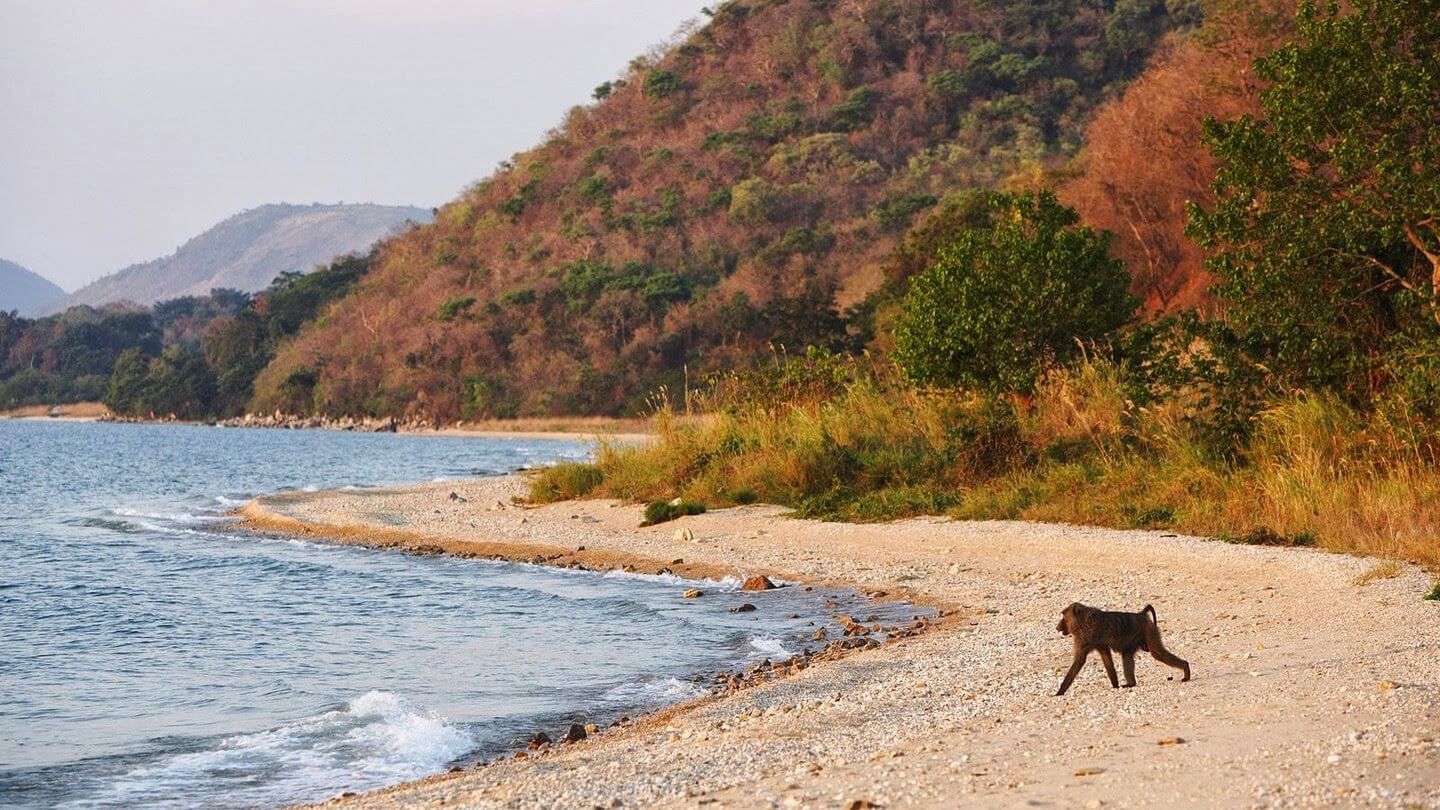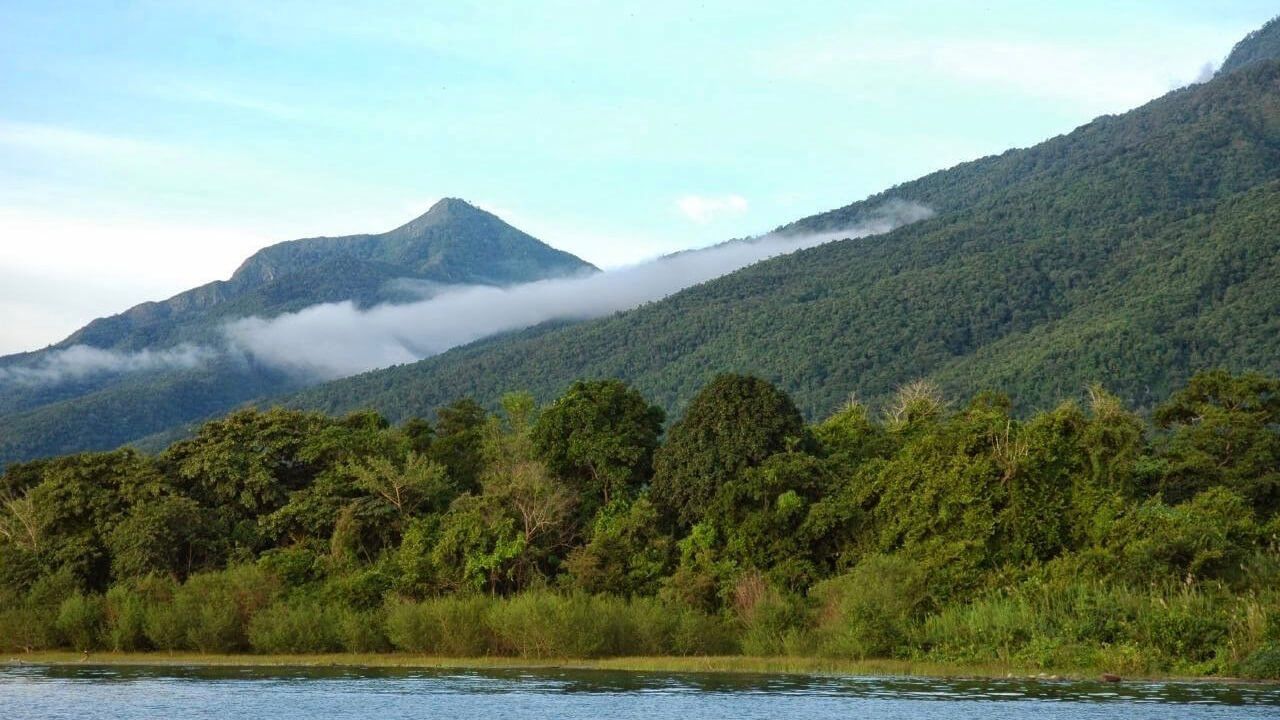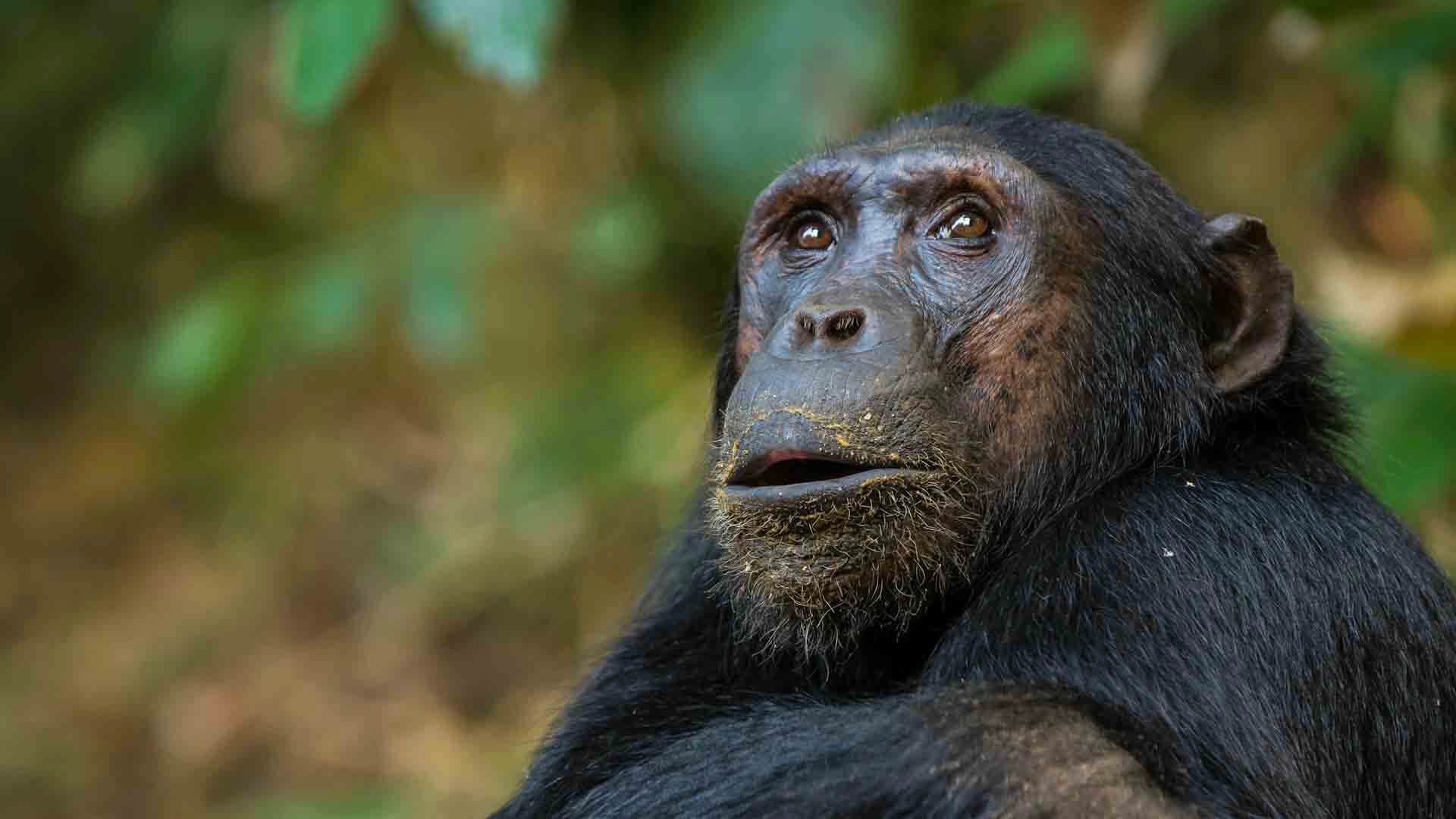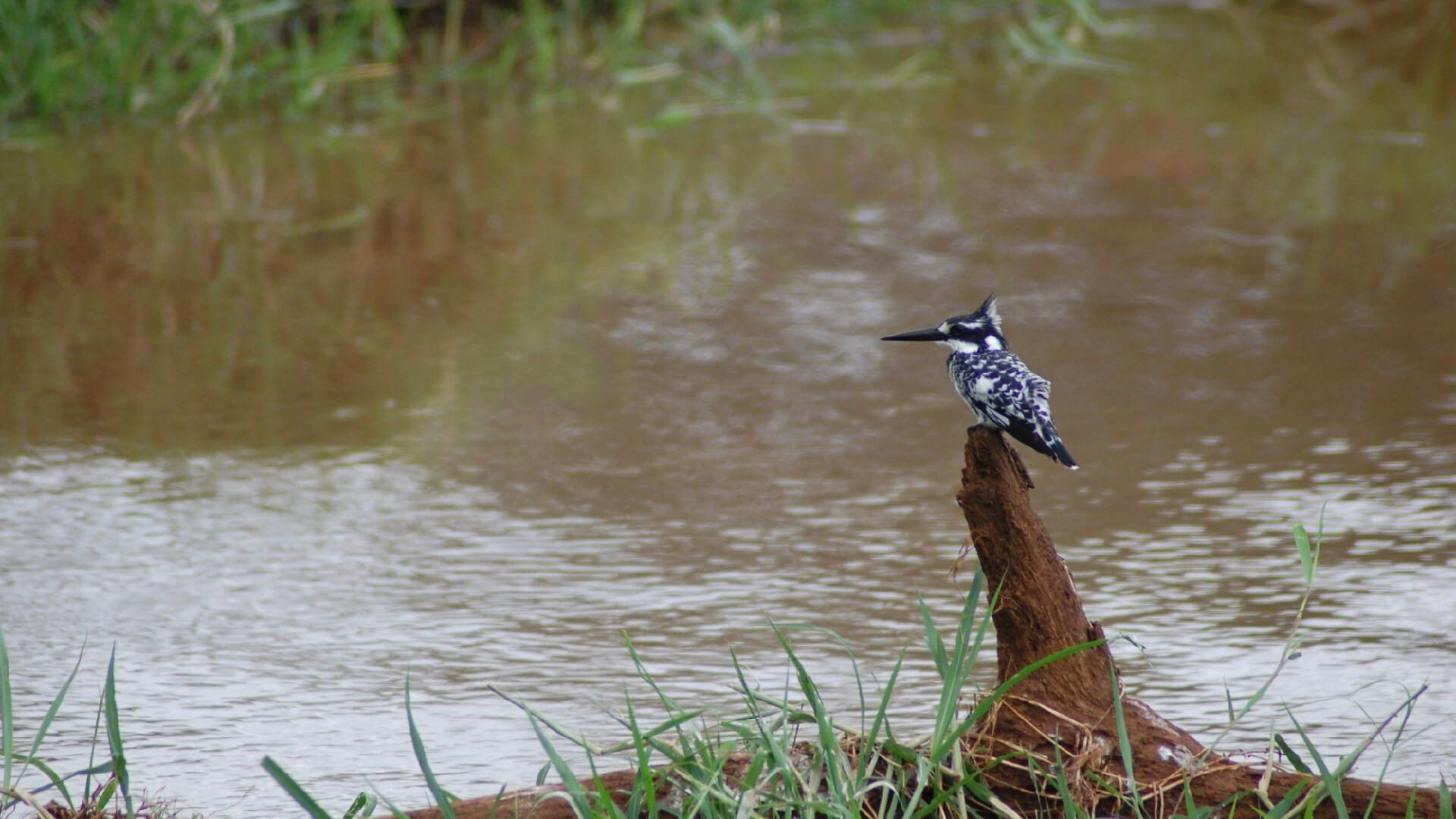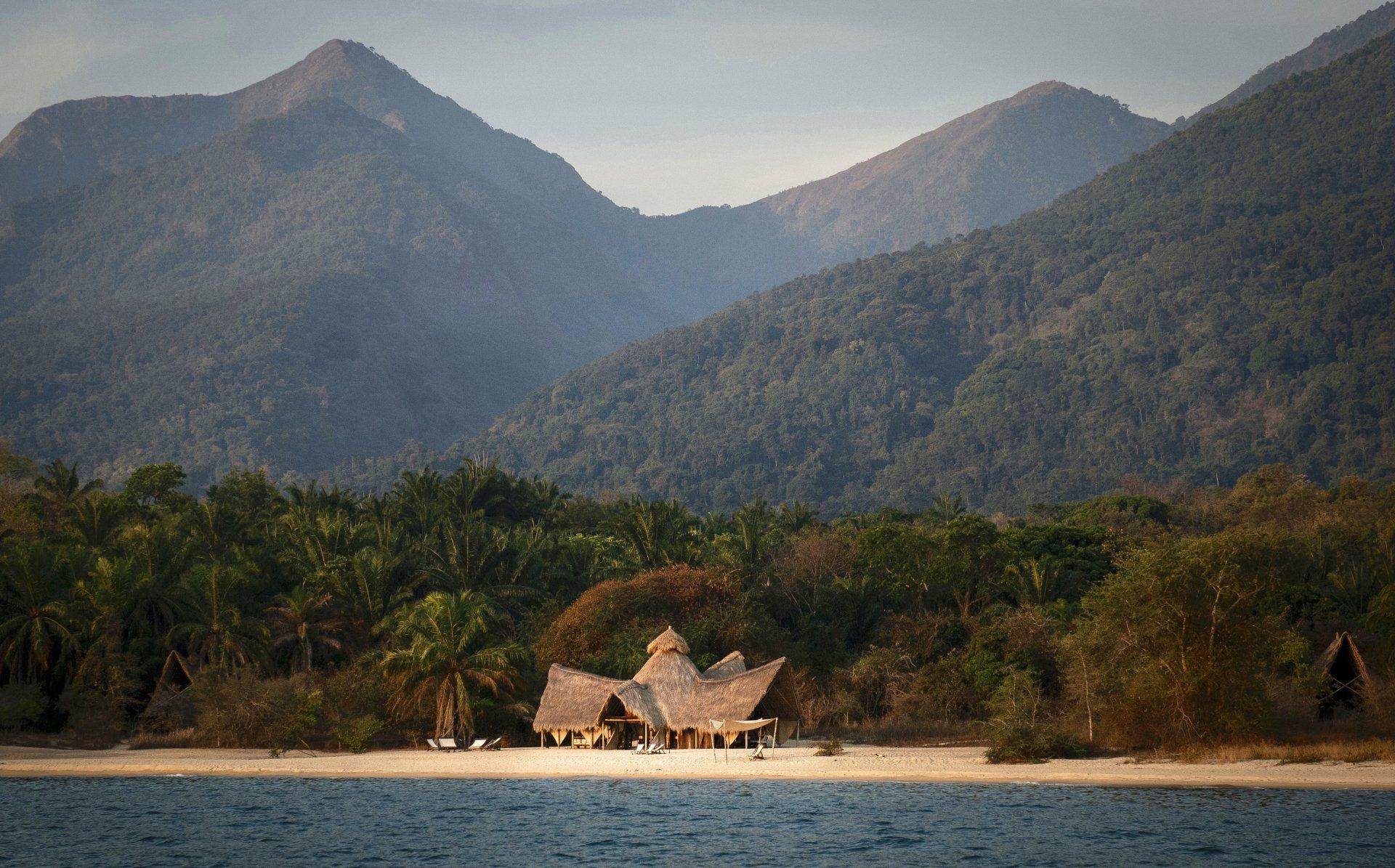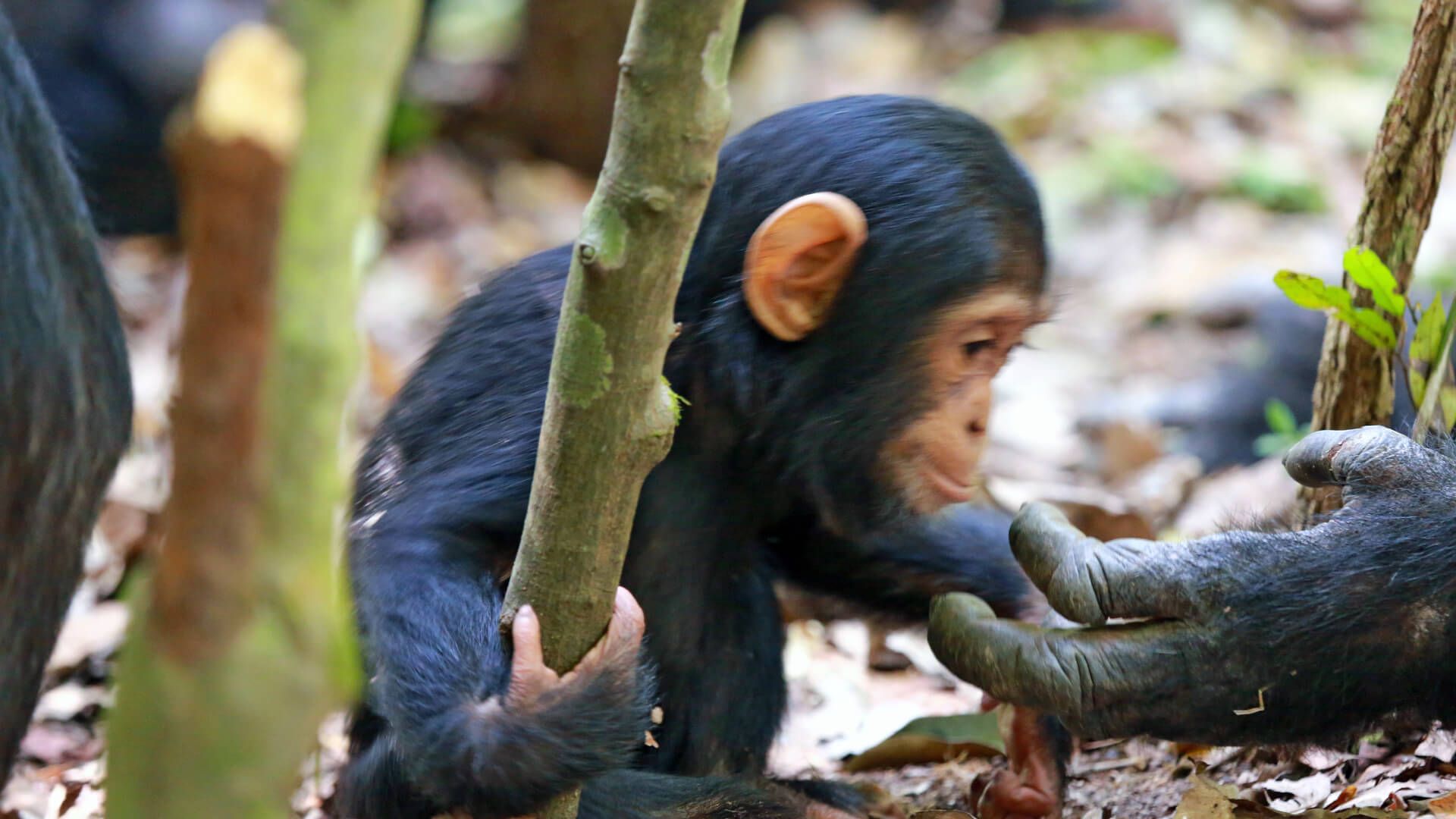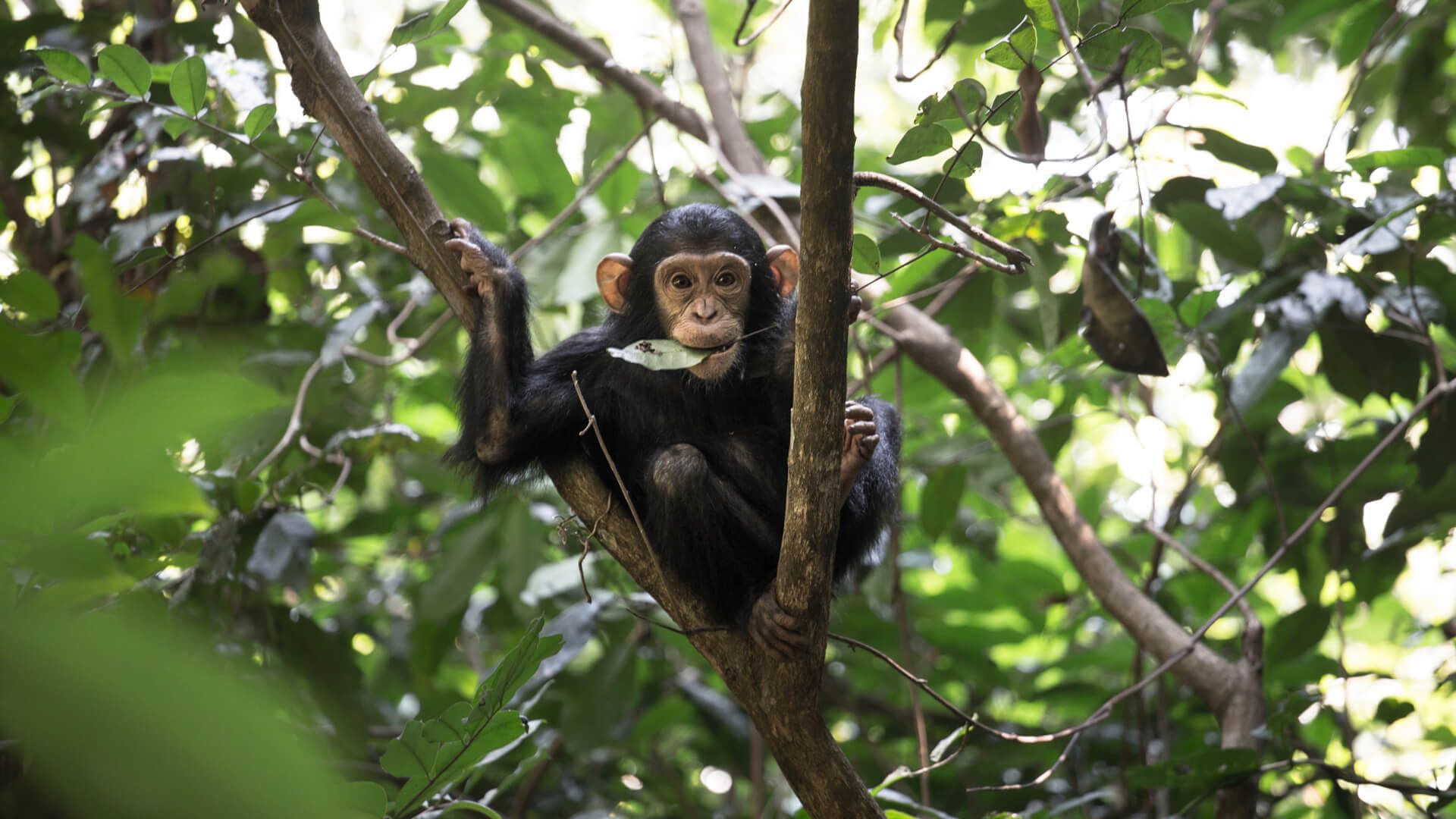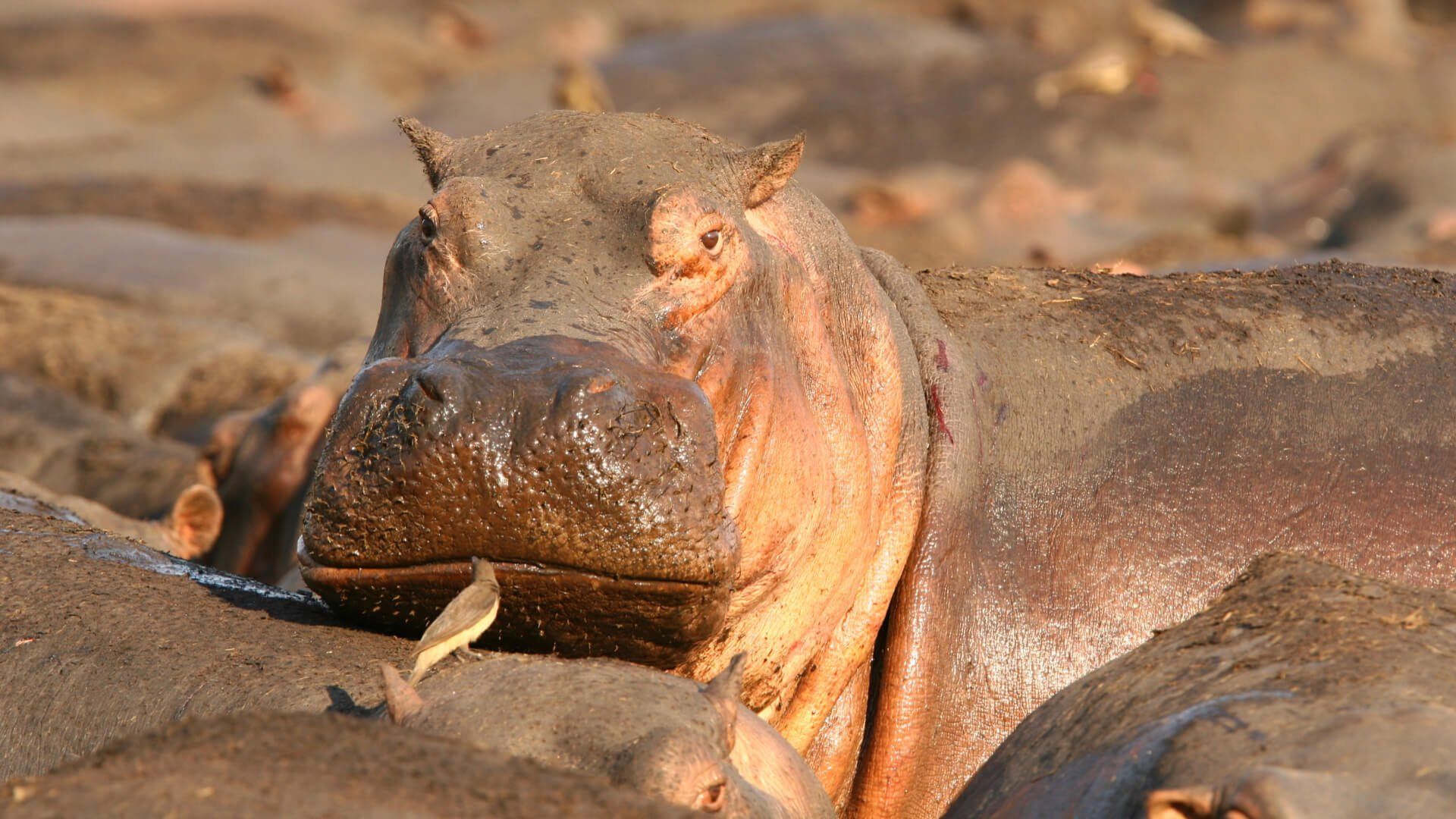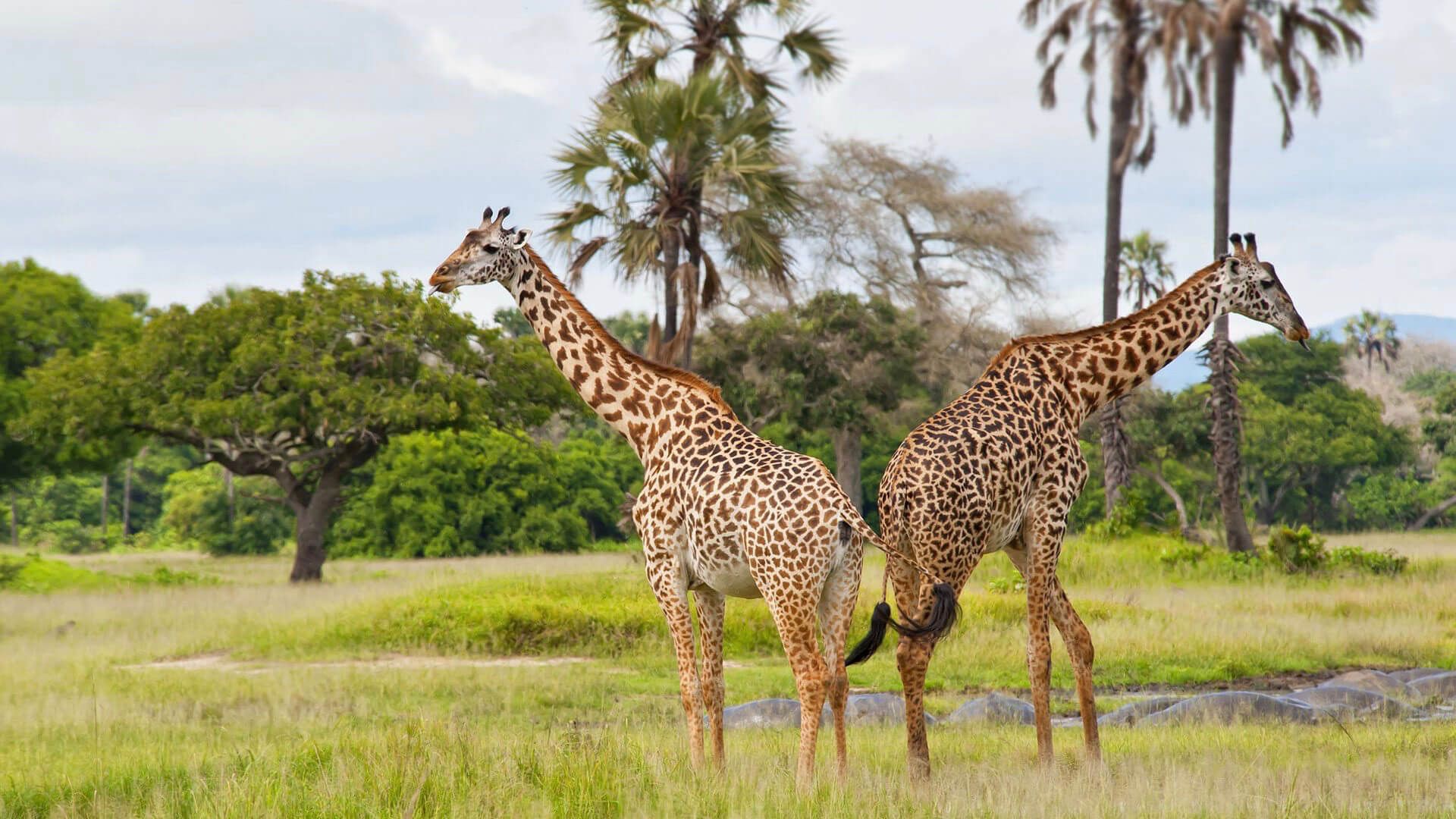TANZANIA WESTERN CIRCUIT
GOMBE STREAM NATIONAL PARK
The tiny Gombe Stream National Park is located on the north-eastern shore of Lake Tanganyika near the border to Burundi. Even though it is the smallest park in Tanzania, it has become world-famous through the pioneering work of the passionate Dr Jane Goodall who studied the behaviour of chimpanzees. The park’s landscape consists of steep valleys, streams and rivers. The vegetation changes from tropical rainforests, alpine bamboo to grasslands – similar to that of the neighbouring Mahale Mountains National Park. Air charters land at the town of Kigoma from where you will access the island by boat.
Gombe is famous for its big population of chimpanzees. These incredible primates have habituated to humans and can be seen on a walking safari through the forests. Other primates sighted in the park include velvet monkeys, beachcomber olive baboons and red-tailed monkeys.
Bushbucks and bush pigs can also be seen foraging on the forest floors from time to time. The park has over 200 species of birds with fish eagles, palm nut vultures, tropical boubous and trumpeter hornbills most commonly seen. Lake Tanganyika with its clear water is home to over 100 cichlid species and has an abundance of hippos.
MAHALE MOUNTAINS NATIONAL PARK
Set among the spectacular, forested slopes of the Mahale Mountains, the Mahale Mountains National Park is best known for having a wild chimpanzee population of around 800 individuals. Only accessible by boat or plane, it is a wild frontier that offers brilliant hiking opportunities and the chance to climb the imposing Mount Nkungwe. The park's dense undergrowth and mountainous setting make it a park for the physically fit, but it rewards intrepid explorers with a wealth of animal and bird life. Nearby Lake Tanganyika, one of the oldest and deepest lakes in the world, you will find a great place for snorkelling, swimming and fishing. It is renowned for its fantastic sunsets over Lake Tanganyika, which makes it an essential stop for keen photographers and safari enthusiasts.
The park’s breathtaking array of habitats include rainforests, grasslands, alpine bamboo and woodlands. Mahale is home to nine species of primates
including the yellow baboon, red colobus, blue monkeys and the red-tailed monkey as well as 73 other mammals. Over 90 unique species of fish swim in the clear waters of the lake.
KATAVI NATIONAL PARK
Home to the largest herds of buffalo on the planet, Katavi National Park is a relatively untouched wilderness paradise, situated in the western part of Tanzania. The park boasts a wonderful array of habitats, ranging from flood plains of thick reeds and dense waterways that teem with hippo and crocodile to woodlands, open grasslands, forests and pristine seasonal lakes.
Katavi National Park is the third largest park in Tanzania. It is also by far one of the least visited in the country, making it a truly untouched wildlife paradise. Due to its location, it is quite hard to access it by road, so the easiest way in and out is with charter flights.
The park is primarily fed by the Katuma river which in the rainy season (April and May) transforms the park into a wetland. Lake Chada and Lake Katavi are both seasonal lakes which are situated within the park boundaries. In terms of vegetation the park hosts a varied mix of bush land, Miombo forests, riverine forests as well as grasslands.

